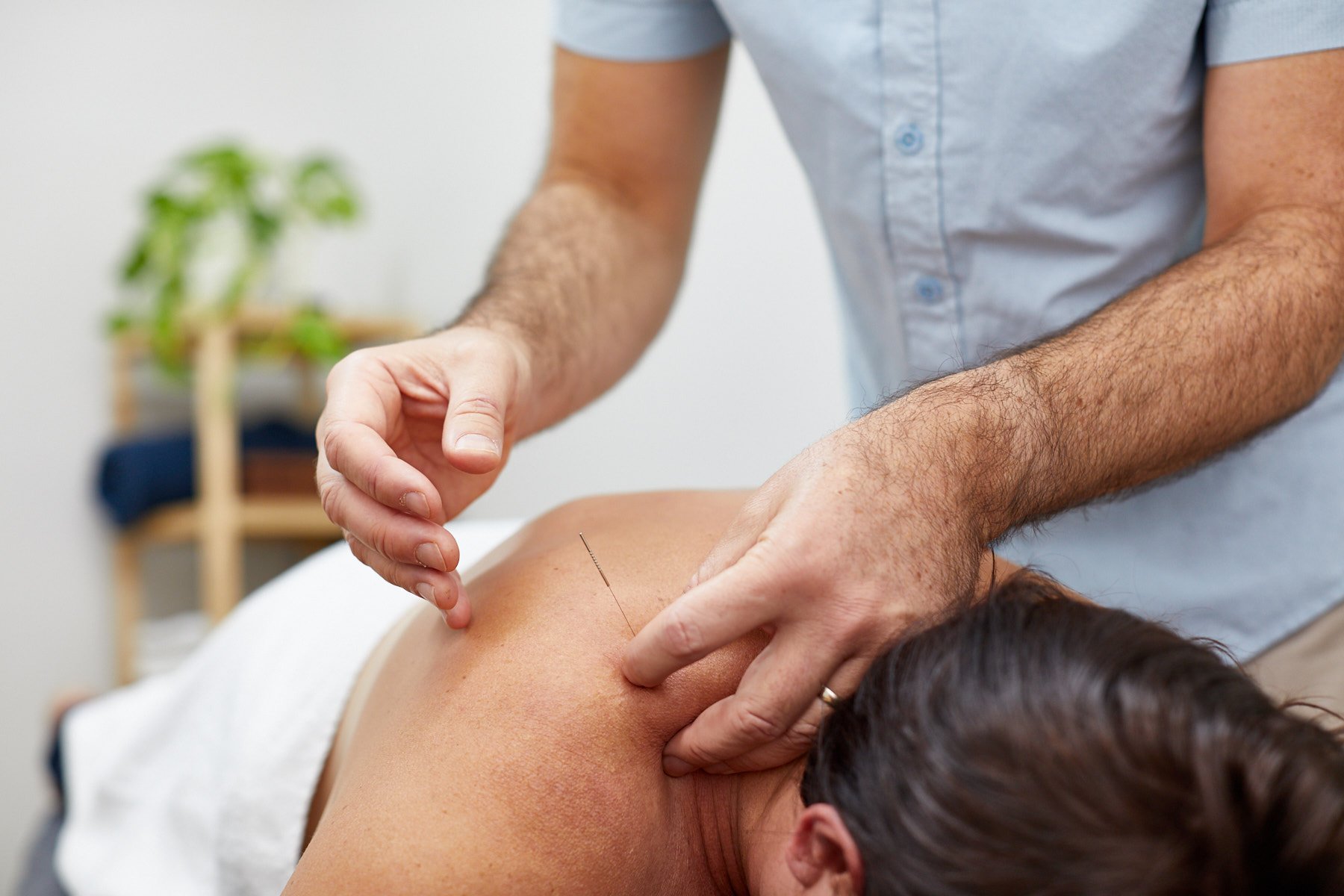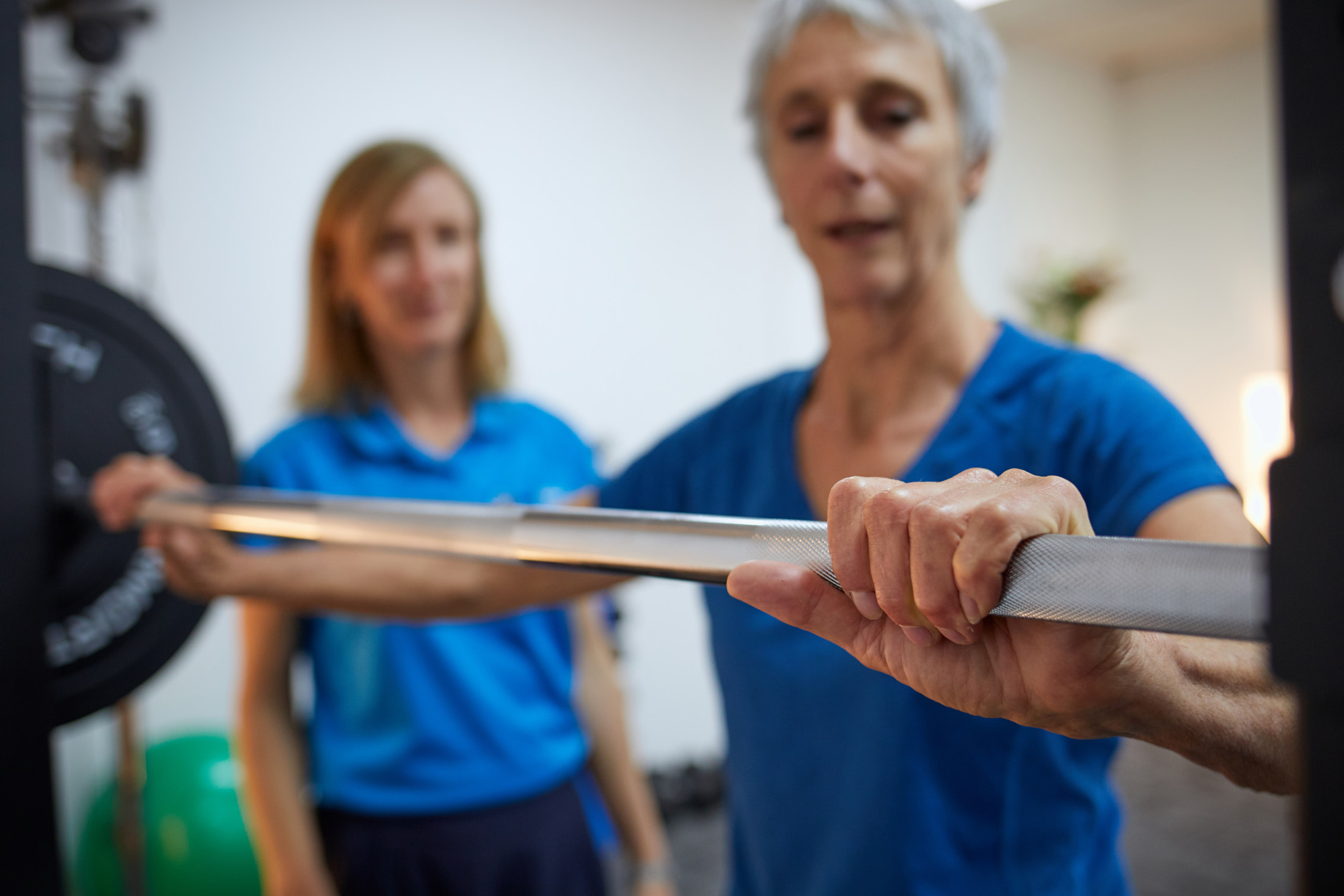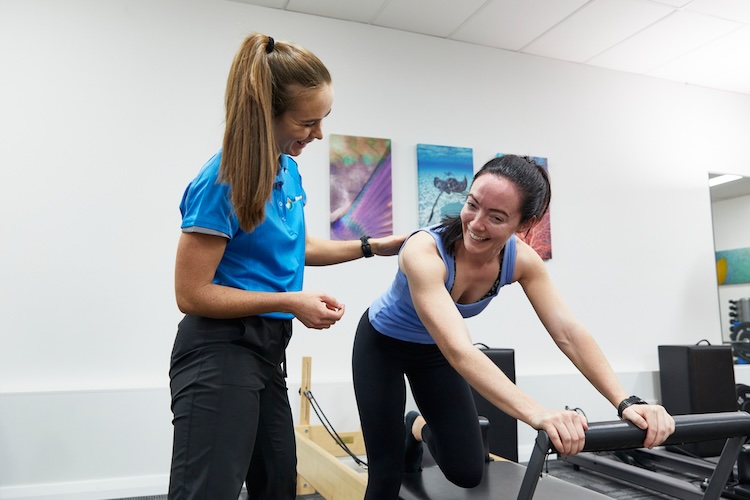Jonathan Wray Specialist Musculoskeletal Physiotherapist (FACP)

I’ve been using acupuncture and dry needling for more than a decade now in clinical practice and one of the questions that I am most often asked is, how does it work?
This is a good question and one which I will elaborate on in this blog. For the sake of this article, I will use acupuncture and dry needling as interchangeable terms as essentially, they involved putting single use, sterile, fine filament needles into a person’s body to elicit a therapeutic effect.
The clinical reasoning and philosophy behind them however may be different. A simple difference is that dry needling is mainly associated with myofascial trigger points (more on this later) and acupuncture which takes many more hours of training has a philosophy steeped in traditional Chinese medicine which looks to re-address imbalances within the many systems of the body to promote health and healing. This is akin to “homeostasis” (a process by which biological systems tend to maintain stability while adjusting to conditions that are optimal for survival).
What is acupuncture/dry needling?
Firstly, let’s start with what, in my opinion acupuncture / dry needling is NOT. It is not a panacea, a cure all, a magical elixir or magical bullet that will heal anything and everything!
We need to be sensible here. We are governed by the laws of nature as much as the environment that we live in, and just like the natural world we are susceptible to our genetic inheritance which together with environmental factors and lifestyle choices ultimately will influence our health.
Acupuncture in my opinion is also NOT a substitute for western medicine, however it can be a very useful non-pharmacological adjunct to western medicine to relieve pain and promote health.
So back to the question…………..how does it work?
As a Specialist Musculoskeletal Physiotherapist the number one reason people come to see me is because they are in pain. (You can read more on pain in my blog here )
With musculoskeletal pain, different tissues can produce sensory input to the central nervous system that may contribute to a pain experience. Commonly with injury and overuse, areas in the myofascial system (muscles and fascia) can produce “trigger points” that are either active or latent. The most accepted definition of a trigger point describes, “a hyperirritable spot in skeletal muscle that is associated with a hypersensitive palpable nodule in a taut band. The spot is painful on manual compression and can give rise to characteristic referred pain, referred tenderness, motor (muscle) dysfunction, and autonomic phenomena” (1).
How does acupuncture / dry needling treat pain?
Research has shown that acupuncture/dry needling has both local and central nervous system effects (2). Locally (close to where the needle has been inserted) acupuncture / dry needling has an effect on chemical mediators in the tissues associated with pain and inflammation. Centrally it activates powerful descending pain modulating processes from the brain and spinal cord (3).
We also know that acupuncture influences areas in the brain associated with a pain experience. If we scan a person’s brain in real time whilst they are having acupuncture / dry needling with functional magnetic resonance imaging (FMRI) we see that certain areas of the brain are affected (4)(5). Deactivation of parts of the brain commonly associated with a pain experience and central to the regulation of emotion, cognition, bio-behaviour, endocrine and autonomic functions has been observed during acupuncture. These areas are activated by stress, pain and negative emotions and therefore deactivation through acupuncture suggests its role in analgesia and pain relief (6)
Acupuncture and dry needling also influence the autonomic nervous system. This is part of the nervous system responsible for regulating involuntary processes like breathing rate, heart rate, digestion, blood pressure etc. We are constantly in a balance between our sympathetic nervous system (SNS) and our parasympathetic nervous system (PNS). The SNS is responsible for fight or flight responses, getting us ready for action. Heart rate increases, digestive and restorative processes are put on hold and the body is put in a ready state. The PNS is the opposite, more the rest and digest processes associated with recovery, tissue healing and homeostasis. We know that constantly being in a stress response i.e., dominantly SNS related activity will impair tissue and wound healing (7), therefore addressing this is crucial for optimal recovery and repair.
Emerging evidence is showing that acupuncture activates distinct brain regions in different kinds of diseases caused by an imbalance between the sympathetic and parasympathetic activities. It also modulates adaptive neurotransmitter production in related brain regions to alleviate these autonomic responses (8).
Is acupuncture placebo?
Often, we hear but surely, it’s all smoke and mirrors, placebo and no better than “sham” acupuncture (i.e., not real acupuncture). Well, these are good points that’s for sure and I will take them on one at a time.
Firstly, I have outlined some of the contemporary research above that shows some of the physiological processes involved when someone has acupuncture. Now if we talk about “placebo” there is likely an element of this involved in any form of treatment. But don’t be fooled that placebo is an inert only in your mind type of process. That would be to do it a great disservice.
A placebo response based on a person’s expectations and contextual factors can be a powerful healing attribute relating to specific Psycho-neurobiological phenomena. Placebo has been associated with release of the brains endogenous opioid system, endocannabinoids, oxytocin, dopamine and vasopressin all powerful pain modulating mechanisms (9). Placebo has also shown to improve motor performance by enhanced corticospinal system excitability and reduced fatigue by modulating readiness potential during the anticipatory phase of movement (10).
So, should we be optimising the placebo response? Absolutely if it can give those sorts of gains, in fact you could argue that promoting a placebo response is a necessary part of enhancing a clinical encounter and part of a positive state that facilitates pain relief, healing and improved function all of which have been shown to be high priorities for people attending physiotherapy in private practice (11).
What about acupuncture being no better than sham or pretend acupuncture, as this is often an argument that is thrown around when people are trying to discount the potential role of acupuncture and dry needling. Well a good systematic review of 39 randomised controlled trials (the gold standard in research) totalling 20827 patients showed that acupuncture was superior to both sham acupuncture and no acupuncture for all musculoskeletal conditions observed (12). This was also found in other reviews for common musculoskeletal pain conditions where acupuncture was superior to sham acupuncture or usual treatment (13).
Acupuncture for treating head, neck and shoulder related disorders
Now I have a special interest in treating head neck and shoulder related disorders so how does acupuncture and dry needling fair here? When it comes to common headache presentations that we see in the clinic primarily tension type headache and migraine, as little as 6 session of acupuncture have been show to be effective in reducing the severity and frequency of episodes (14)(15). This makes it an effective alternative to pharmacological intervention.
When it comes to treating neck related disorders as well as improving neck pain, improvements in muscle contractile properties and neck range of motion have also been noted after as little as two treatments of acupuncture and dry needling (16)(17). Impairments in sensory motor control relating to the cervical spine are often observed in people with neck pain. Dry needling has also shown to improve joint position error and range of motion in patients with neck pain after just one treatment and may be an important part of a multimodal treatment approach in this patient population (18).
Multi-disciplinary approach at Next Wave Therapy
As I said at the beginning of this article, acupuncture and dry needling are not a panacea to cure all ailments. At Next Wave Therapy we recognise this and as part of our clinical reasoning and collaboration with our patients we use it in conjunction with active management strategies, lifestyle advice and psychological therapies to help you move, think and feel alive! If you would like more information why not get in touch with us?
Written by Jonathan Wray
Jonathan is a Specialist Musculoskeletal Physiotherapist (as awarded by the Australian College of Physiotherapists 2020) and has trained extensively in dry needling and integrative acupuncture. He is also the tutor on the Dry Needling for Physiotherapist Level 1 Course (Australian Physiotherapy Association) and the tutor for Integrative Acupuncture course in Western Australia.
1. Fernandez-De-Las-Pena C, Dommerholt J. International Consensus on Diagnostic Criteria and Clinical Considerations of Myofascial Trigger Points : A Delphi Study. Pain Med. 2018;19:142–50.
2. Gattie E. The Effectiveness of Trigger Point Dry Needling for Musculoskeletal Conditions by Physical Therapists: A Systematic Review and Meta-analysis. 2017;47(3).
3. Sanchez-Infante J, Bravo-Sanchez A, Jimenez F, Abian-Vicen J. Effects of dry needling on mechanical and contractile properties of the upper trapezius with latent myofascial trigger points : A randomized controlled trial. Musculoskelet Sci Pract. 2021;56(September).
4. Niddam DM, Chan R, Lee S, Yeh T, Hsieh J. Central representation of hyperalgesia from myofascial trigger point. 2008;39:1299–306.
5. Dougherty DD, Kong J, Webb M, Bonab AA, Fischman AJ, Gollub RL. A combined (11c) diprenorphine PET Study and FMRI Study of Acupuncture Analgesia. Behav Brain Res. 2009;193(1):63–8.
6. Hui K, Marina O, Liu J, Rosen B, Kwong K. Acupuncture, the Limbic System, and the Anticorrelated Networks of the Brain. Auton Neurosci. 2010;157(0):81–90.
7. Gouin J, Kiecolt-Glaser J. The Impact of Psychological Stress on Wound Healing: Methods and Mechanisms. Immunol Allergy Clin North Am. 2011;1–14.
8. Li Q, Shi G, Xu Q, Wang J, Liu C, Wang L. Acupuncture Effect and Central Autonomic Regulation. 2013;2013(1).
9. Calloca L, Barsky A. Placebo and Nocebo Effects. N Engl J Med. 2020;382:554–61.
10. Testa M, Rossettini G. Enhance placebo , avoid nocebo : How contextual factors affect physiotherapy outcomes. Man Ther [Internet]. 2016; Available from: http://dx.doi.org/10.1016/j.math.2016.04.006
11. Mcrae M, Hancock MJ. improved function , education and prevention : a survey. J Physiother [Internet]. 2017; Available from: https://doi.org/10.1016/j.jphys.2017.08.002
12. Vickers AJ, Sloan M, Cancer K, Vertosick EA, Sloan M, Cancer K, et al. Acupuncture for Chronic Pain: Update of an Individual Patient Data Meta-Analysis. 2019;19(5):455–74.
13. Yuan Q, Wang P, Liu L, Sun F, Cai Y, Wu W, et al. Acupuncture for musculoskeletal pain : A meta-analysis and meta- regression of sham-controlled randomized clinical trials. Nat Publ Gr [Internet]. 2016;(July):1–24. Available from: http://dx.doi.org/10.1038/srep30675
14. Linde K, Allais G, Brinkhaus B, Fei Y, Mehring M, Bc S, et al. Acupuncture for the prevention of tension-type headache ( Review ). Cochrane Database Syst Rev. 2016;
15. Linde K, Allais G, Brinkhaus B, Fei Y, Mehring M, Ea V, et al. Acupuncture for the prevention of episodic migraine ( Review ). Cochrane Database Syst Rev. 2016;
16. Llamas-ramos R, Martin-Pecos D, Gallego-Izquierdo T, Llamas-Ramos I, Plaza-Manzano G, Ortega-Santiago R, et al. Comparison of the Short Term Outcomes Between Trigger Point Dry Needling and Trigger Point Manual Therapy For the Management of Chronic Mechanical Neck Pain: A Randomized Control Trial. 2014;44(11):852–62.
17. Mejuto-Vazquez M, Salom-Moreno J, Ortega-Santiago R, Truyols-Dominguez S, Fernandez-De-Las-Pena C. Short-Term Changes in Neck Pain, Wide Spread Pressure Pain Sensitivity, and Cervical Range of Motion After the Application of Dry Needling in Patients With Acute Mechanical Neck Pain: A Randomized Control Trial. J Orthop Sport Phys Ther. 2014;44(4):252–61.
18. Murillo C, Treleaven J, Cagnie B, Peral J, Fallah D, Lluch E. Effects of Dry Needling of the Obliquus Capitus Inferior on Sensory Motor Control and Cervical Mobility in People With Neck Pain: ADouble Blind Randomized Sham-Controlled Trial. Brazilian J Phys Ther [Internet]. 2021;(xxxx). Available from: https://doi.org/10.1016/j.bjpt.2021.07.005






